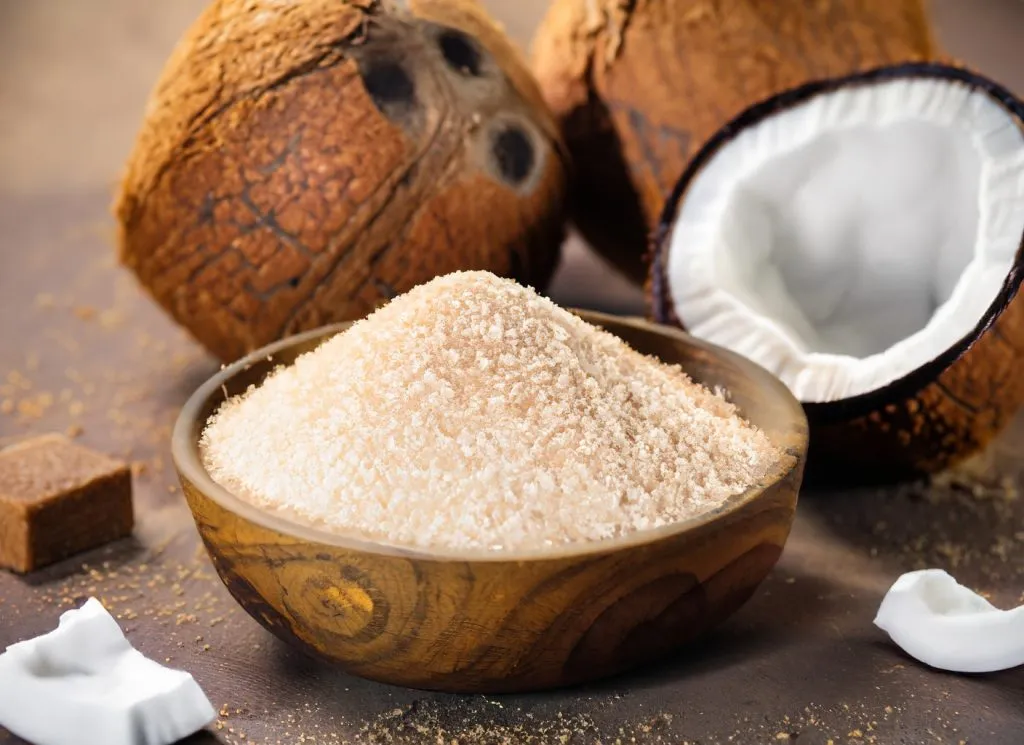Coconut Sugar and Brown Sugar: Is a True Replacement Possible?
Yes, coconut sugar can replace brown sugar in most recipes on a 1:1 basis, but it will impart a slightly different flavor and color to the finished product.
Coconut sugar and brown sugar are both staples in many kitchens around the world. Derived from different sources and processed in unique ways, they each bring distinct flavors and textures to dishes. This article delves into the heart of these two sugars, examining if coconut sugar can indeed stand in for brown sugar in your favorite recipes.
Coconut Sugar vs. Brown Sugar: The Basics
Coconut Sugar:
- Origin: Made from the sap of the coconut palm tree.
- Processing: The sap is extracted, boiled, and then solidified.
- Flavor Profile: It has a caramel-like taste, somewhat similar to brown sugar but with a hint of coconut essence.
Brown Sugar:
- Origin: Derived from sugarcane or sugar beet.
- Processing: Made by adding molasses back into refined white sugar.
- Flavor Profile: Offers a rich, deep sweetness with a molasses undertone.
Similarities and Differences
- Texture and Consistency: Both sugars have a moist, crumbly texture. However, coconut sugar can sometimes be grainier.
- Nutritional Value: Coconut sugar has trace amounts of minerals and vitamins but is still high in calories like brown sugar.
- Glycemic Index: Coconut sugar boasts a slightly lower glycemic index than brown sugar, meaning it could cause a slower rise in blood sugar levels.
Can Coconut Sugar Replace Brown Sugar in Recipes?
In many recipes, particularly in baking, coconut sugar can be a direct substitute for brown sugar. Their similar moisture content and sweetness levels make them interchangeable in most cases. However, there may be a subtle flavor difference, and adjustments might be needed based on personal taste.
Tips for Using Coconut Sugar
- Baking: When baking, you might want to combine coconut sugar with other sugars to achieve the desired texture and flavor.
- Dissolving: Coconut sugar might take slightly longer to dissolve, so it’s essential to mix it well.
- Storage: Store in a cool, dry place. If it hardens, you can soften it by placing a slice of apple or bread in the container.
The Cocoman Chronicles: Aamir Iqbal’s Sweet Revolution
In the heart of Lahore’s bustling markets, where the scents of spices and the sounds of haggling intermingle, Aamir Iqbal was best known as ‘Cocoman’. It wasn’t just a name; it was a title of respect, a testament to his expertise.
Aamir’s journey as Cocoman began unexpectedly. As a budding chef, he was passionate about creating the perfect dessert. Yet, every time he baked, he felt something was amiss. The brown sugar he used, while adding sweetness, seemed to overpower the delicate flavors he aimed to achieve.
One day, on a culinary exploration in Thailand, Aamir stumbled upon a local delicacy sweetened not with the usual sugars, but with something that tasted both familiar and exotic. It was coconut sugar. The revelation was profound. Here was a sweetener that was subtle, with a hint of caramel, that didn’t overpower but complemented other ingredients.
Aamir brought his newfound treasure back to Lahore. But replacing a staple like brown sugar in traditional recipes wasn’t easy. There was resistance, skepticism, and a fair bit of ridicule. “Why would Cocoman, of all people, use this unfamiliar ingredient?” they whispered.
But Aamir’s belief in coconut sugar was unwavering. He started with small steps, replacing brown sugar in his signature desserts. The difference was palpable. His desserts had a newfound depth, a richness that was balanced by the coconut sugar’s gentle sweetness.
Word spread. Customers began to ask for desserts made specifically with coconut sugar. Local chefs, initially skeptical, now sought Aamir’s advice on incorporating this wondrous ingredient into their dishes.
As years passed, Aamir’s moniker ‘Cocoman’ became synonymous with innovation and quality. He wasn’t just a chef; he was a pioneer, someone who had dared to challenge the status quo and emerged victorious.
Today, in the heart of Lahore, amidst the same bustling markets, there stands a quaint little patisserie known as ‘Cocoman Delights’. Here, every dessert tells a story, a story of passion, perseverance, and the sweet revolution introduced by Aamir Iqbal, the legendary Cocoman.
Conclusion
While coconut sugar and brown sugar have their nuances, in many recipes, they can be swapped for one another. If you’re venturing into using coconut sugar as a replacement, start by experimenting in small quantities. And always remember: when trying new ingredients, it’s crucial to understand their properties and effects. We encourage you to share your experiences and findings in the comments section below!

